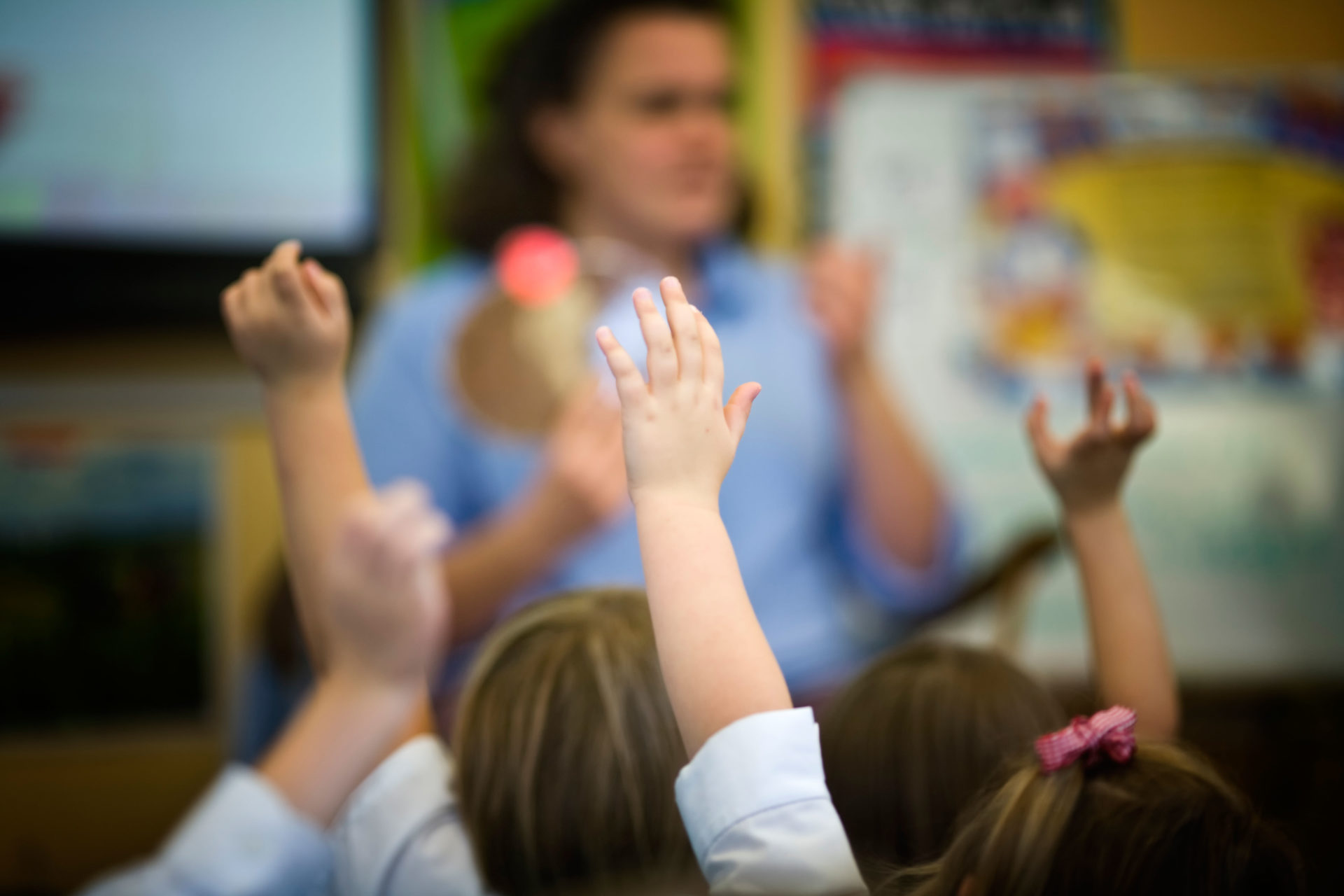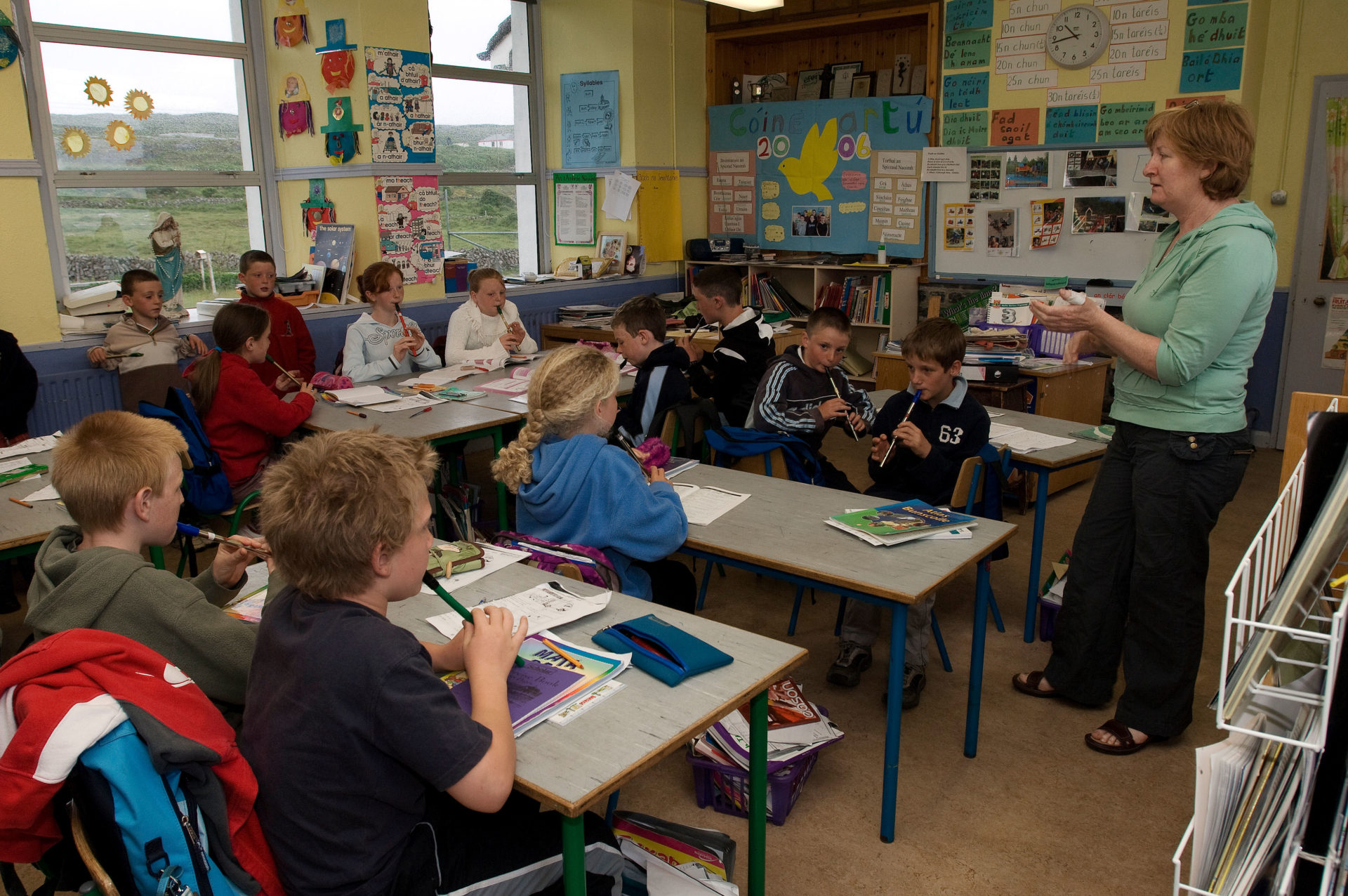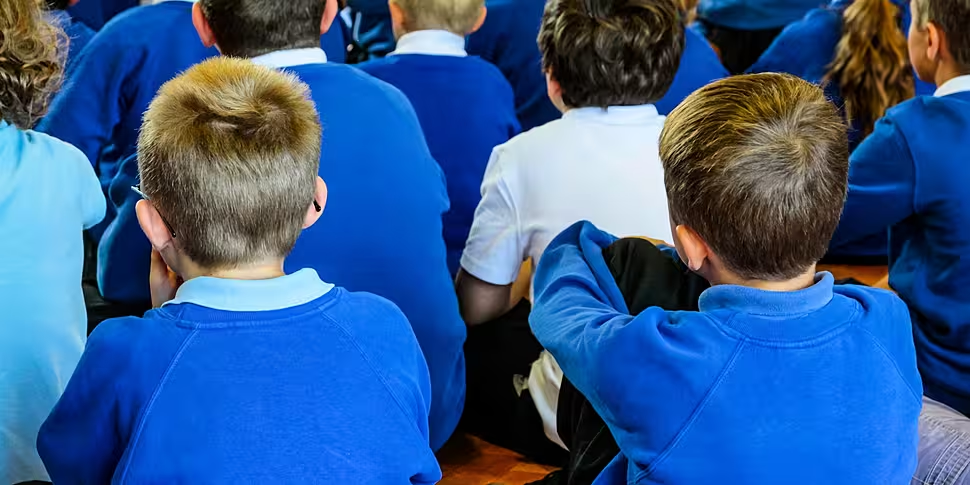Ireland’s class sizes have decreased - but are still the highest in the EU.
With children now back in school after their summer break, figures published by the Irish Independent has found class sizes are at their lowest in two decades.
On The Pat Kenny Show, Principal Simon Lewis said the news was “great” but cautioned there is still more work to do.
“We’ve come from a very high baseline but it is good that we’re starting to say that we’re close to having good class sizes in Ireland,” he said.
“We’re still the highest in the EU but we’re getting there - that’s the positive.”
 Children in primary school. Image: Justin Leighton / Alamy
Children in primary school. Image: Justin Leighton / AlamyThe figures also revealed a significant amount of regional variation - with children in some rural counties significantly more likely to have large class sizes.
In Leitrim, close to one-third of students are in classes where there are more than 30 children.
“Teachers of my vintage will look back to the start of our careers and that would have been normal,” Mr Lewis said.
“It shouldn’t be normal now and possibly the reason counties like Leitrim and other more rural counties are in that situation is because they’re small schools, so there’s a number of classes within one room.
“You also have the situation where schools get their teacher allocation based on the number of students that are in your school, many schools - especially small schools - if they lose one family, they might lose a teacher.
“So, they maybe up their class sizes just in case a family leaves.”
 Children on the Aran Islands. Picture by: Alamy.com
Children on the Aran Islands. Picture by: Alamy.comConversely, Leitrim also has a large number of schools where children are taught in classes where there are less than 20 pupils.
Mr Lewis said this is not a coincidence.
“We have this bizarre system in Ireland for allocating classes,” he said.
“Depending on the numbers you have, you could be close to this cliff edge on how many teachers you get.
“So, if you’re one child short of the next number of pupils you need for the next teacher, you may find yourself in a terrible situation where you’re splitting class sizes and therefore the children have to be divided out among the teachers that are there.
“In some ways, it’s random but it’s also by design - it’s a very, very tricky system and really makes no sense.”
Ideal class size
Mr Lewis said class sizes have always been the “number one priority for the unions” when they make budget submissions because it makes such a difference to the quality of education a child receives.
“Studies internationally would suggest that there’s a Goldilocks situation where class sizes can be too high but they can also be too low,” he said.
“Then you’ve got that sweet spot in the middle - which is about 15 to 21, 22 pupils per class.”
The decrease in class sizes can be attributed to falling pupil numbers and an increase in teachers.
Last year, the number of children in mainstream schools dropped by 0.7%, while an additional 220 teachers were employed.
Main image: A group of primary school children during a school assembly. Picture by: NorthScape / Alamy Stock Photo









